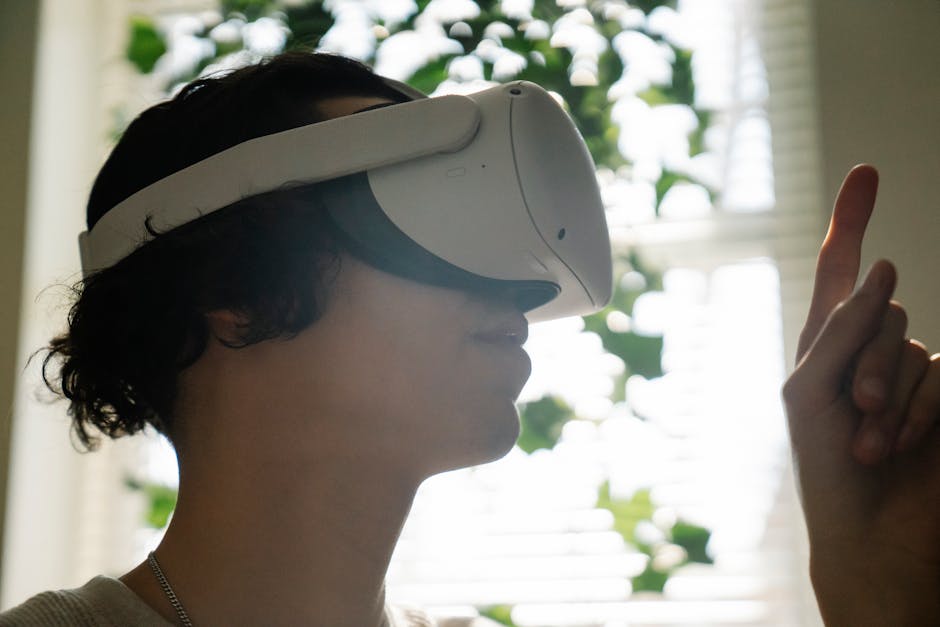Latest Trends in Location-Based Mobile Ad Strategies
Latest Trends in Location-Based Mobile Ad Strategies
Looking to boost your mobile ad strategies?
The latest trends in location-based marketing offer exciting opportunities to engage with your audience in real time. From hyperlocal targeting to proximity marketing innovations, these strategies are revolutionising the way businesses connect with customers.
By incorporating geofencing, beacon technology, and augmented reality advertising, you can create personalised and impactful campaigns that drive results.
Stay ahead of the curve with these cutting-edge location-based mobile ad strategies.
Key Takeaways
- Hyperlocal targeting, geofencing, and geotargeting are key strategies in location-based mobile ad strategies.
- The integration of beacon technology enhances data accuracy and provides real-time insights into consumer preferences and trends.
- Proximity marketing innovations, such as leveraging proximity sensor advancements and real-time location tracking, enhance customer engagement and build connexions.
- Augmented reality advertising is an effective way to increase user engagement, brand interaction, and purchase intent through immersive experiences.
Hyperlocal Targeting

If you want to reach potential customers within a specific radius of your business, hyperlocal targeting allows you to tailor your mobile ad strategies with precision. This approach focuses on reaching consumers in a very specific geographic area, often within a few blocks or miles of a particular location. By doing so, you can prioritise local search and neighbourhood marketing to connect with people who are physically close to your business and likely to make a purchase.
Hyperlocal targeting leverages the location data of mobile users to deliver relevant and timely ads. For example, if you run a coffee shop, you can target people within walking distance during morning hours. This allows you to reach potential customers when they’re most likely to be looking for a coffee fix. By understanding the habits and preferences of the local community, you can tailor your ad content to resonate with their needs and interests.
This level of specificity not only increases the relevance of your ads but also maximises the impact of your marketing budget. Instead of casting a wide net, hyperlocal targeting ensures that your mobile ads are seen by the people most likely to convert, ultimately driving foot traffic and boosting sales.
Geofencing and Geotargeting
You’ll discover the key differences between geofencing and geotargeting and how they can significantly impact your ad performance. Understanding the nuances of each strategy will help you optimise your location-based mobile ad campaigns to reach your target audience more effectively.
Let’s explore the practical implications of incorporating geofencing and geotargeting into your mobile advertising strategies.
Geofencing Vs. Geotargeting
The use of geofencing and geotargeting in location-based mobile ad strategies offers distinct advantages for targeting your audience based on their physical location.
Here’s a comparison of geofencing and geotargeting:
-
Geofencing creates a virtual perimeter around a specific area, triggering mobile ads when a user enters or exits the defined zone.
-
Geotargeting focuses on delivering ads to users based on their current location, allowing for more precise targeting within a certain radius.
-
Precision is a key advantage of geotargeting, as it enables tailored messaging to users in specific locations.
-
Engagement is a strength of geofencing, as it can prompt immediate action when users are in close proximity to a targeted location.
Transitioning into the subsequent section about the ‘impact on ad performance,’ it’s essential to understand how these strategies influence the effectiveness of location-based mobile ads.
Impact on Ad Performance
Enhancing ad performance through geofencing and geotargeting relies on precise location-based targeting for optimal results.
Geofencing allows you to set up virtual perimeters around specific locations, triggering targeted ads when potential customers enter those boundaries. This increases ad engagement by delivering relevant content to users when they’re most likely to be interested.
Geotargeting, on the other hand, focuses on delivering ads to users based on their current location, ensuring that the content is contextually relevant. This personalised approach can significantly improve conversion rates as it reaches consumers at the right place and time, increasing the likelihood of them taking the desired action.
By harnessing the power of geofencing and geotargeting, you can maximise ad performance and drive better results for your campaigns.
Now, let’s delve into the integration of beacon technology to further enhance location-based ad strategies.
Beacon Technology Integration

You can now explore the integration of beacon technology in your location-based mobile ad strategies. This technology offers enhanced customer targeting, allowing you to reach users with personalised offers based on their proximity to your business.
Additionally, beacon integration provides improved data analytics, giving you valuable insights into customer behaviour and preferences.
Enhanced Customer Targeting
Boost customer engagement by integrating beacon technology into your mobile ad strategies. Enhanced audience segmentation and personalised messaging strategies can be achieved through beacon technology integration, allowing you to target customers with relevant and timely content.
Here’s how you can leverage beacon technology for enhanced customer targeting:
-
Precise Targeting: Utilise beacons to pinpoint the exact location of customers, enabling you to deliver highly targeted ads based on their real-time physical proximity.
-
Behavioural Insights: Gather valuable data on customer behaviour and preferences, allowing you to tailor your ad content to their specific interests and needs.
-
Contextual Messaging: Deliver contextual messages and promotions to customers based on their location within your store or venue, increasing the likelihood of conversion.
-
Enhanced Personalisation: Create personalised experiences by sending relevant offers and notifications to customers as they move through different sections of your establishment.
Integrating beacon technology into your mobile ad strategies opens up new possibilities for reaching and engaging your target audience effectively.
Transitioning into the subsequent section about ‘proximity-based personalised offers’, you can further enhance customer engagement by delivering tailored promotions based on their physical proximity to your business.
Proximity-Based Personalised Offers
By integrating beacon technology into your mobile ad strategies, you can deliver personalised offers based on customers’ physical proximity to your business, enhancing their engagement and driving conversions.
Location-based personalisation allows you to send targeted messages or promotions to customers when they’re near your store, increasing the likelihood of a purchase. This level of personalised communication can significantly impact mobile ad engagement, as customers are more likely to respond to offers that are relevant to their current location and needs.
By leveraging beacon technology, you can create a seamless and tailored experience for your customers, ultimately leading to improved conversion rates and customer satisfaction.
It’s a powerful way to connect with your audience at the right time and place, making your mobile ad strategies more effective.
Improved Data Analytics
With beacon technology integration, you can constantly monitor and analyse customer data to enhance the effectiveness of your location-based mobile ad strategies. This allows for improved data accuracy and enables predictive modelling to anticipate consumer behaviour.
Here’s how beacon technology integration can benefit your data analytics:
-
Real-time Insights: Beacon technology provides real-time data on customer movement and behaviour within your location, allowing for immediate insights into consumer preferences and trends.
-
Enhanced Targeting: By analysing the data collected through beacon technology, you can create more targeted and personalised mobile ad campaigns, increasing relevance and engagement.
-
Behavioural Analysis: Beacon technology integration enables you to conduct in-depth behavioural analysis, understanding customer patterns and preferences to tailor ad content accordingly.
-
Optimised Campaign Performance: Leveraging beacon technology data for predictive modelling helps in optimising ad campaigns, improving ROI and overall effectiveness.
Proximity Marketing Innovations

Leverage the latest proximity marketing innovations to engage your target audience with personalised mobile ads based on their physical location. Proximity sensor advancements and real-time location tracking have revolutionised location-based push notifications, allowing businesses to deliver hyper-targeted ads to consumers in specific geographic areas. These advancements enable proximity-based customer engagement, where businesses can send relevant promotions or messages to individuals when they’re in close proximity to a particular store or point of interest.
By harnessing proximity sensor advancements, businesses can gain valuable insights into consumer behaviour and preferences, thereby enhancing the effectiveness of their mobile ad strategies. Real-time location tracking further refines this approach, enabling businesses to deliver timely and contextually relevant ads to consumers based on their current whereabouts.
These innovations not only provide a more personalised and tailored experience for consumers but also offer businesses the opportunity to drive foot traffic, boost conversions, and build stronger connexions with their target audience.
Embracing these proximity marketing innovations can give your business a competitive edge in the ever-evolving landscape of mobile advertising.
Location-Based Data Analytics

When implementing location-based mobile ad strategies, it’s essential to integrate location-based data analytics to optimise targeting and measure campaign effectiveness. By leveraging real-time tracking and location-based insights, you can enhance the relevance of your ads and improve overall performance.
Here are four key aspects to consider:
-
Real-Time Tracking: Utilise real-time tracking to monitor user behaviour and location, allowing for dynamic adjustments to ad targeting and messaging based on the user’s current context.
-
Geo-Fencing Capabilities: Implement geo-fencing to create virtual perimeters around specific locations, enabling targeted ads to be delivered to users within these predefined boundaries.
-
Performance Metrics: Analyse location-based performance metrics to gain insights into the effectiveness of ad campaigns in different geographic areas, helping to refine targeting strategies.
-
Consumer Behaviour Analysis: Use location-based data analytics to understand consumer behaviour patterns in various locations, enabling the delivery of more personalised and relevant ad experiences.
Augmented Reality Advertising

To maximise the impact of your location-based mobile ad strategies, consider integrating augmented reality advertising to enhance user engagement and interaction with your brand. Augmented reality (AR) advertising offers a unique and immersive way for consumers to interact with brands, creating memorable and interactive experiences. By overlaying digital information onto the physical world, AR provides an innovative platform for brand engagement, allowing users to interact with products in a virtual environment before making a purchase decision. This technology not only captures users’ attention but also fosters a deeper connexion with your brand.
| Augmented Reality Advertising | Benefits |
|---|---|
| Enhances user engagement | By providing interactive experiences for users, AR advertising captures attention and encourages active participation. |
| Increases brand interaction | AR allows consumers to engage with your brand in a novel and memorable way, leading to enhanced brand recall and recognition. |
| Drives purchase intent | Immersive AR experiences can influence purchase decisions by allowing users to visualise products in their own environment. |
Integrating augmented reality advertising into your location-based mobile ad strategies can elevate user engagement and provide a competitive edge in the increasingly digital advertising landscape.
Frequently Asked Questions
How Can Businesses Ensure That Their Hyperlocal Targeting Strategies Are Not Perceived as Invasive or Intrusive by Consumers?
To ensure your hyperlocal targeting strategies aren’t invasive, prioritise privacy protection. Be transparent about data usage, offer opt-out options, and tailor messages to enhance consumer engagement. Respecting boundaries fosters trust and positive interactions.
What Are Some Potential Privacy Concerns Associated With Geofencing and Geotargeting, and How Can Businesses Address These Concerns to Maintain Consumer Trust?
When using geofencing and geotargeting, you should address potential privacy concerns by prioritising consumer transparency and data security. Uphold ethical advertising practises to maintain trust and respect for consumer privacy.
What Are the Key Challenges Businesses May Face When Integrating Beacon Technology Into Their Mobile Ad Strategies, and How Can These Challenges Be Overcome?
When integrating beacon technology, challenges may arise in ensuring seamless implementation and integration. To overcome these, focus on solutions like thorough testing, user feedback, and proper training. This helps in addressing potential hurdles and maximising effectiveness.
Are There Any Emerging Trends or Technologies in Proximity Marketing That Businesses Should Be Aware of to Stay Ahead of the Competition?
To stay ahead of the competition, be aware of emerging technologies and proximity marketing trends. Location-based advertising can give you a competitive edge. Keep an eye on new strategies to reach your audience effectively.
How Can Businesses Leverage Location-Based Data Analytics to Personalise and Optimise Their Mobile Ad Campaigns, and What Are Some Best Practises for Doing so Effectively?
To personalise and optimise your mobile ad campaigns effectively, leverage location-based data analytics. Implement personalised targeting and data optimisation techniques. Ensure geolocation privacy and integrate beacons for effective beacon integration.
Conclusion
As you navigate the bustling city streets, imagine receiving personalised mobile ads that guide you to the nearest hidden gem, based on your exact location. With hyperlocal targeting, geofencing, and beacon technology, businesses are reshaping the advertising landscape.
Embracing proximity marketing and harnessing location-based data, they’re creating immersive experiences that blur the line between digital and physical reality.
Stay tuned for the next wave of augmented reality advertising, bringing brands to life right before your eyes.
Contact us to discuss our services now!
